Valencia
After last time’s run in the general direction of home, from Gibraltar to Almeria, we pick up the pace further along the Spanish Mediterranean coast at Valencia. With no photos of the intervening Costa Colida and Costa Brava we must assume the 270 miles that my father and grandparents covered in their Ford 8 revealed a deserted coastline of dusty roads and scruffy farms. Having arrived at the city we see an encased statue, or possibly a series of painted figures, captured under a sun defying hoarding.
In the modern day, I can’t find this as a permanent feature in a public square. Valencian architecture in the centre of the city tends to be much of a muchness with the the type of five story five buildings with rectangular windows and balconies seen in the background being too common to guide the viewer to a particular point.
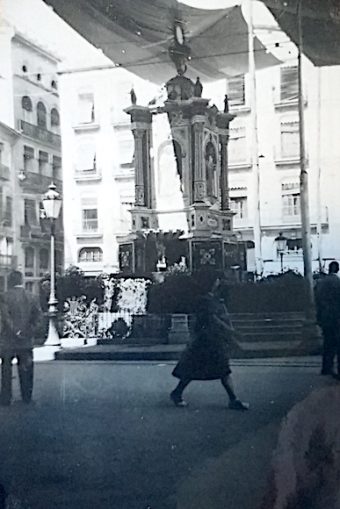
© Always Worth Saying 2022, Going Postal
Although the steps and street lamp make the arrangement appear permanent, the ornate work suggests wood, plaster and paint not stone as does the need to protect the structure from the sun. I wonder if this was kept in church and then carried out for a religious occasion? Yes, it looks too large but the Spanish have a need for such things. While dressed as Ku Klux Klansmen, pallbearers in the most unlikely of places carry the most impossibly outsized religious art down the narrowest of streets accompanied by the sound of the fat men of the favela, in a neighbouring thoroughfare, squashing a donkey to death.
Although not as high church as some Puffins, I can recognise a monstrance on the top of the elaborate monument, perhaps coming into its own during Corpus Christi? A monstrance is where the consecrated eucharistic host (the sacramental bread) is placed during devotional ceremonies and processions. In the Catholic Church such a host is materially the body of Christ and is therefore treated with utmost respect and exuberant bells and smells. Valencia Cathedral boasts the biggest monstrance in the world, consisting of over half a ton of silver, nearly a stone of gold, thousands of pearls, a pound of platinum and hundreds of precious stones. During the festival of Corpus Christi, traditionally the first Thursday after Trinity Sunday, it is processed through the streets of Valencia accompanied by showers of petals.
Valencia Cathedral is also well blessed with holy relics. I would love to think that not only did my father and grandparents photograph, by local standards, a middling monstrance but behind it’s ornate panels were pieces of profound religious significance. Perhaps the most important of the holy relics held locally might be the Holy Grail itself. In the days before Wikipedia, archeological expeditions struck out for the most exciting of places to find the chalice used by Christ at the Last Supper. Since the invention of Wikipedia, one merely has to find the 13th Century Metropolitan Cathedral-Basilica of the Assumption of Our Lady of Valencia. Straight ahead from the railway station, just ahead of the plastic pitch where the river Turia used to flood before it was diverted into a concrete trench to the south of the municipality.
One hopes the intrepid travellers did get to see the Holy Grail and, while they were about the place, the hand of St Louis Bertran, part of the sponge that offered Jesus a drink of vinegar on Calvary, the Blessed Virgin Mary’s comb and the many other ecclesiastical remembrances kept in cupboards about the Cathedral-Basilica.
These would add to an impressive list of holy things revealed to the Worth-Sayings over the years. Miss AWS (more of whom later) has been in the presence of St Theresa’s hair. Your humble author has knelt before what’s left of St Anthony of Padua’s tongue, the sword hand of King St Stephen of Hungary and somebody’s skull in a box at a place called Esztergom. Not to mention St Peter’s daughter’s bones, the chains that held St Peter and splinters from the true cross. Maybe I am the highest church Puffin after all?
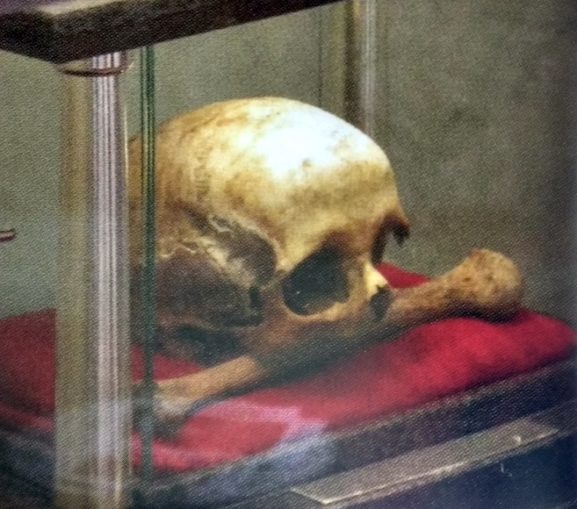
© Always Worth Saying 2022, Going Postal
Speaking of St Peter, in the days before these places were overrun by tourists and you had to pay to get in, I knelt alone before the remains of St Peter himself in the crypt below the altar of his basilica in the Vatican City. A large American gentleman with, in the style of the times, three cameras around his neck approached and in a deafening reverential whisper bellowed, “Is that the guy who killed the dragon?” I couldn’t face it, I just said it was. “Through the heart with a lance, Sir, and rightly so.” True story.
Sitges
About 190 miles to the northeast of Valencia and only 22 miles short of Barcelona sits the Catalonian resort of Sitges. My grandparents are pictured on the beach. To their right lies the Balearic Sea, an enclave of the Mediterranean which holds the islands of Majorca, Minorca and Ibiza. In the background is a somewhat bleached Esglesia de Sant Bartomeu i Santa Tecla with its distinctive tower.
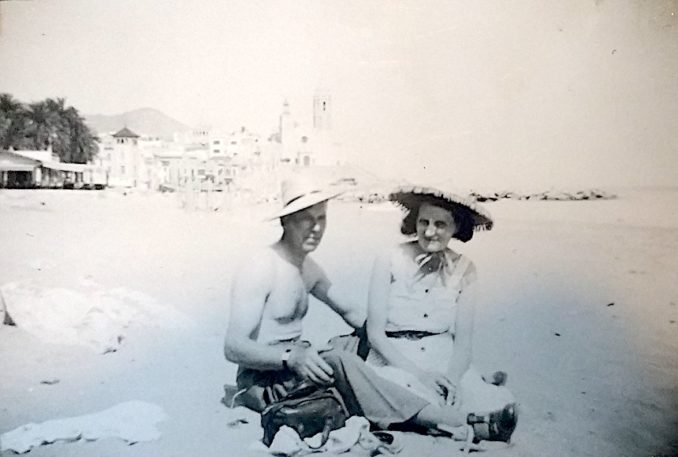
© Always Worth Saying 2022, Going Postal
In the foreground, an Englishman of a certain generation and social class keeps his trousers and socks on while sitting on a deserted beach. Doesn’t my grandmother, Edith, look ill? Despite being painfully thin and with those sunken eyes, she was only 42. As I think I’ve mentioned before, she was a sickly woman and died in the decade following the Spain trip, aged only 56. Presumably, the sunshine and sea air was therapeutic. Less so the near 2,000-mile jalopy ride getting there. It is possible to stand on the exact same spot here, with my grandparents pictured in the first little bay, known the Platja de la Fragata, south of the church. However, it isn’t possible to see the pitch-roofed tower to the left, just before the trees. It either hasn’t survived or has been crowded out by new buildings along the promenade. A 1952 piece in the Irish weekly and Ulster Examiner defined the locale thus:
“The Costa Brava is that picturesque coast north of Barcelona extending to the French border. It is an unspoiled Riviera, rich with coves where the blue Mediterranean washes the fine white sand of its beaches. There are numerous spots, many of them quaint fishing villages – places like Mataro, Blanes, Lioret de Mar Tossa, S’agaro. Palomas, Aigua Blava, to mention a few. Sitges, only 22 miles south of Barcelona, is a dramatically situated amphitheatre on the sea. Its excellent hotels, white houses and extensive beach make it a popular resort.”
What the Ulster Examiner (rightly) hesitated to tell its readers was that since the end of the 19th century the former fishing village had become an enclave of hip bohemian cool, attracting painters, poets, artists and intellectuals. Seven decades on, according to Wiki, Sitges is now ‘gay friendly’ and boasts an annual film festival. In a Sunday Independent article, Sonja Molich tells of the ‘Sitgian darkness’ that is the local carnival. Drag queens? A blissful state of intoxicated self-forgetfulness? Rio, 17th century Venice? Like the set of a Fellini movie? Enough.

Platja de la Ribera (Sitges),
Maria Rosa Ferre – Licence CC BY-SA 2.0
Since the film festival wasn’t inaugurated until 1968 and that which we’re forced to be friendly towards these days wasn’t invented until even later than that, there was less of such nonsense when my father and his parents visited. Contemporaneous articles in the social pages of The Sphere paint a more appropriate picture.
“This year [1952] more than ever most of those who can are rushing to Spain from both London and Paris [and Carlisle], and the favourite resorts are on the Costa Brava and, further south, at Sitges.”
In attendance were Mr Guy McLaren, of Thomas Cook’s in Paris, stepson of New Zealand’s Governor-General Lord Freyberg. Mr McLaren was accompanied by a pretty Swiss wife called Maryse. Lady Farquar wife of diplomat Sir Harold Farquar was there, staying with the Marquesa de Najera, as was Father Caraman, editor of The Month. Vizconde de Güell entertained the well known artist Pedro Pruna and the Ignacio Agustis, he a novelist and journalist, she an attractive Moroccan called Katin. Linda White the American cabaret star was about the resport as were, David and Louise Fellowes and their Eton schoolboy son, Anthony.
The Fellowes summered at their attractive little villa on the San Sebastian beach where they entertained Commanders John Lyon and Peter Day when the Mediterranean fleet visited Barcelona. Lady Doverdale graced the resort. Meteorological expert Peter Snell visited Sitges, as did Chief Deck Officer John Blunden – presumably something important on an aircraft carrier.
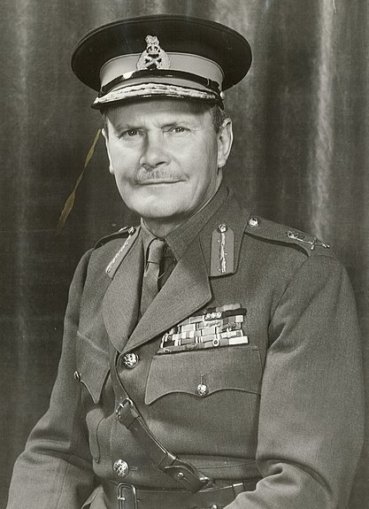
Lieutenant General Bernard Cyril Freyberg,
Archives New Zealand – Licence CC BY-SA 2.0
We can’t casually pass by Lord Freyberg. As well as being the 7th Governor-General of New Zealand, Lieutenant-General Bernard Cyril Freyberg, 1st Baron Freyberg, VC, GCMG, KCB, KBE, DSO & Three Bars, was a hero in two world wars, receiving the DSO for his courage during the landings at Gallipoli in 1915. In November 1916 he was awarded the Victoria Cross following the successful capture of the village of Beaucourt during the battle of the Somme. In the Second War, he headed the Second New Zealand Expeditionary force and was in command of Allied Forces during the unsuccessful defence of Crete. By summer 1942, he was a deputy to Montgomery and fighting with the 8th Army at El Alamein.

© Always Worth Saying 2022, Going Postal
Above, my father is photographed seated about the rocks. Reference to aerial photographs shows that the promenade, more properly known as the Passeig de la Ribera, is a more precious structure with the outsized aggregates used for breakwaters to protect the delicate sandy beach.
Distinctive, with a squat rounded upper windows and a square roof terrace bounded by walls and railings (and with only a few breakwaters meeting the prom), you would think the building in the background would be easy to locate. Not so. Closer to the centre of the township, recently built densely packed apartments prevail. Further along the coast, handsome individual white villas predominate but none of them matches the building behind my father.
To Barcelona
Now only 22 miles from Barcelona, one hopes, although there is no photographic evidence, that he not only visited but lingered about the capital of Catalonia. Unbeknown to him at the time, in the following decades Barcelona was to become an important part of his life. You’ll recall my youngest son, in his 20th year as was his grandfather during his visit, recently struck out for Spain. Preferring easyJet to a 1,600-mile drive in a Ford 8 or catching L’Aquitaine from Gare Austerlitz on a busy Friday teatime, he failed miserably due to a bug in his Covid bug app. His younger sister, Miss AWS, fared better and was not only able to visit Barca this very summer but while there fulfilled a family obligation regarding the proud and much-loved grandfather she never knew.
Can Puffins guess what it was? There have been plenty of clues, especially in the first couple of episodes of this series. More obvious than the necessity of visiting Aunty Lil in Gibraltar, all will be revealed next time on Nostalgia Album!
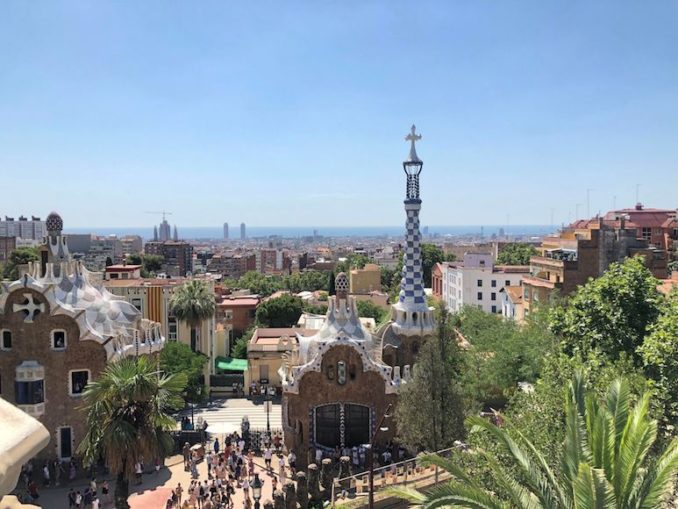
© Always Worth Saying 2022, Going Postal
© Always Worth Saying 2022


